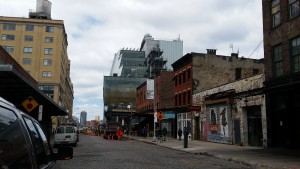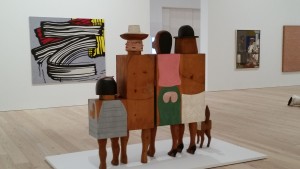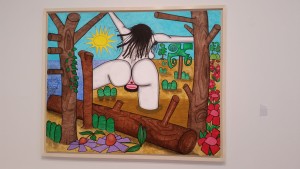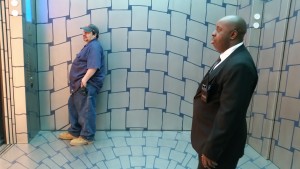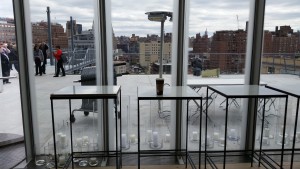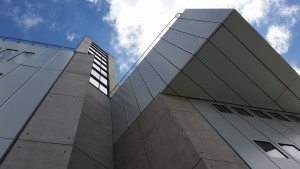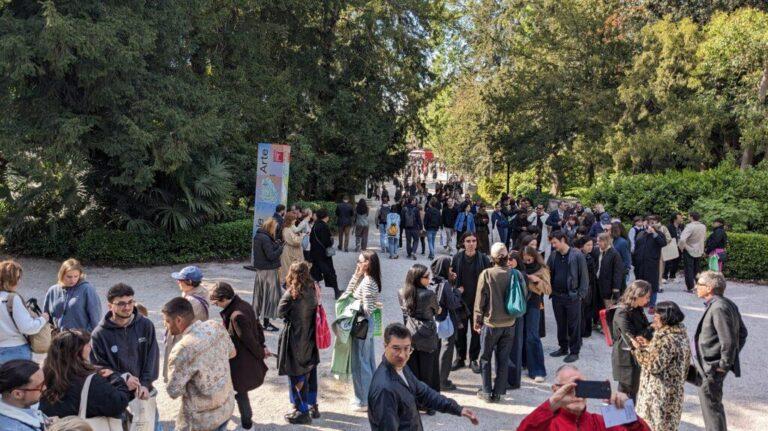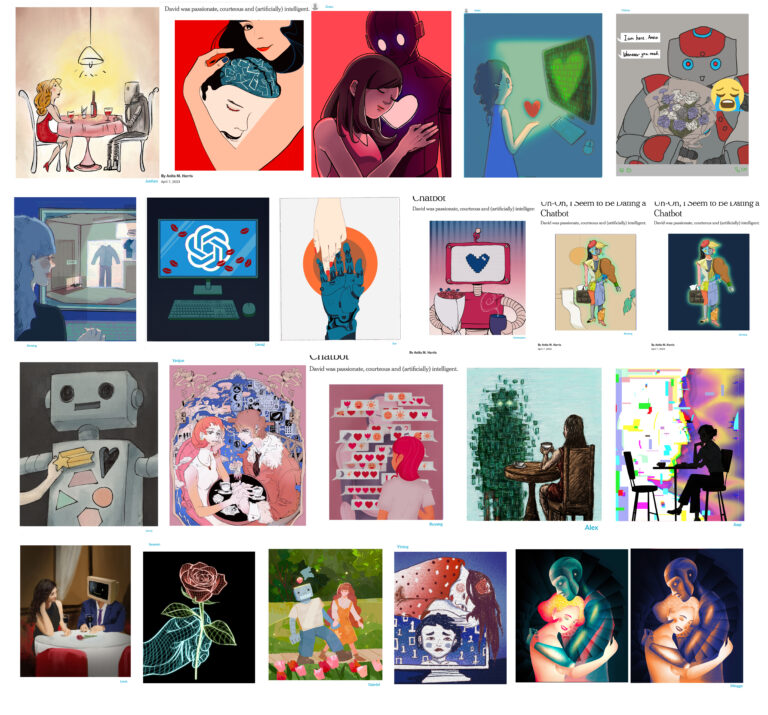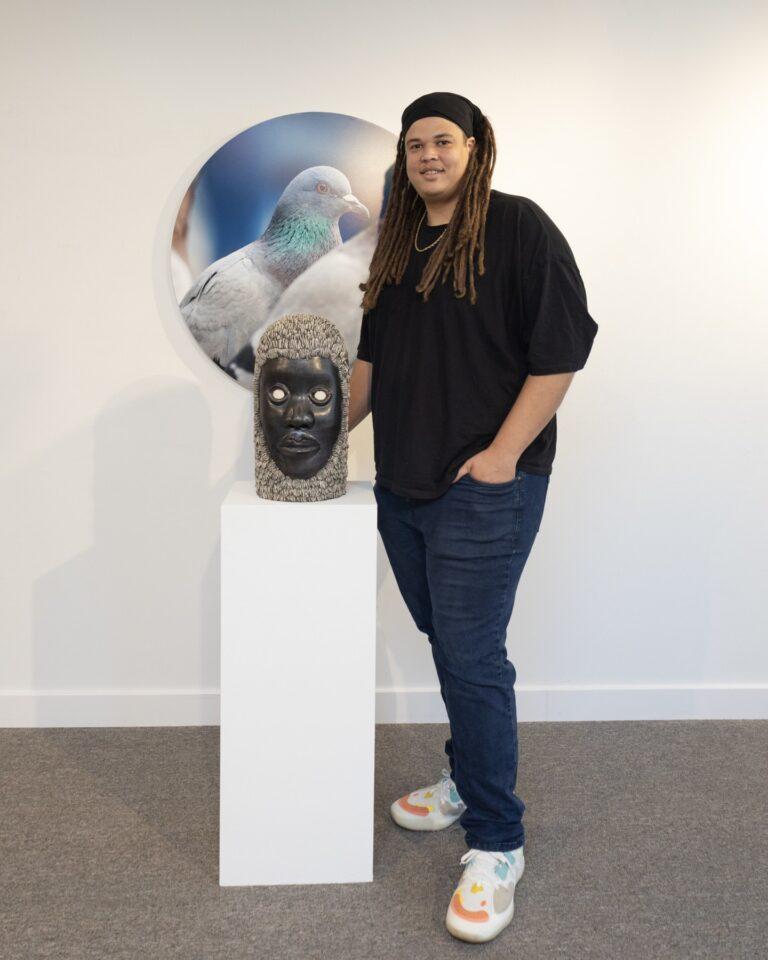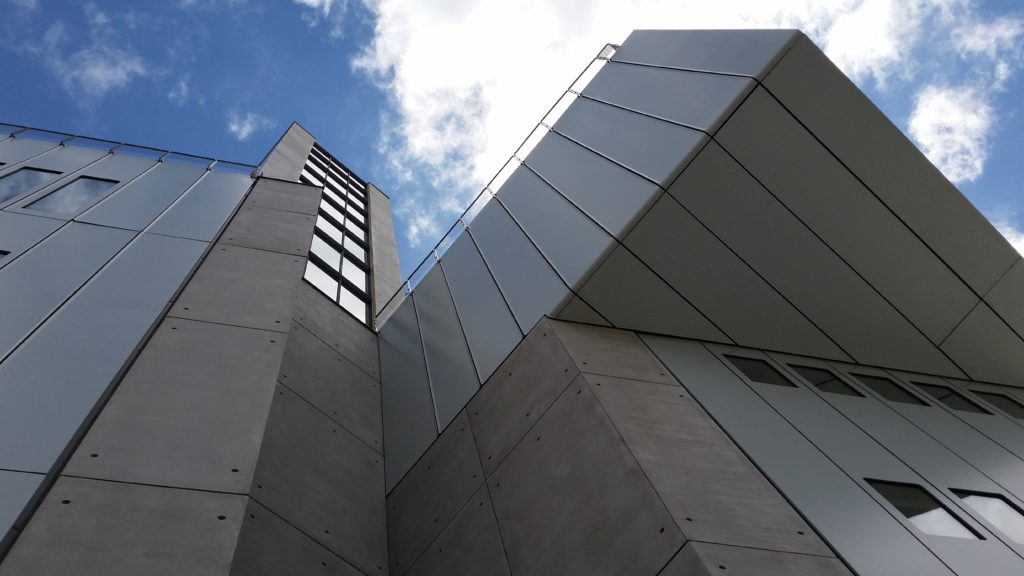
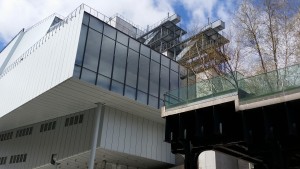
I was privileged to preview the stunning new Whitney Museum in New York City, which has moved from its Marcel Breuer-designed building on Madison Avenue at 78th Street to 99 Gansevoort St. Scheduled to open to the public on May 1, the 225,000 sq.ft. glass-and steel building designed by architect Renzo Piano is located in the old me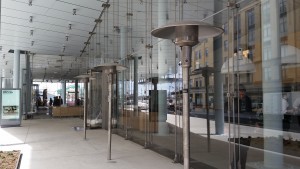 at packing district, a stone’s throw from the Hudson River.
at packing district, a stone’s throw from the Hudson River.
It has already attracted a number of restaurants and upscale shops, says friend and New York arts writer Terry Trucco.
Trucco was wowed by the current exhibit–“America is Hard to See”– which is comprised of more than 400 works from the Whitney’s own collection (now numbering 22,000 works by some 3,000 artists). 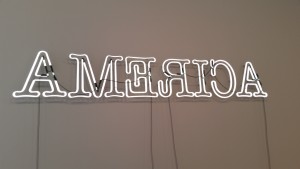
The exhibit spans the entire building, occupying both interior and exterior spaces. It’s organized into a series of 23 “chapters”, each titled after an individual work.
It begins on the glass-enclosed first floor, with an introduction to the Whitney’s early history. (The mus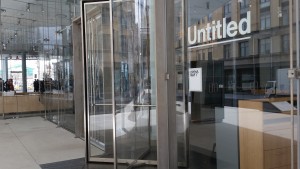 eum was founded by sculptor and arts patron Gertrude Vanderbilt Whitney in 1931.) The exhibit then moves to the eighth floor, and proceeds down to the 5th and, finally to the third, with work from a different period on each floor.
eum was founded by sculptor and arts patron Gertrude Vanderbilt Whitney in 1931.) The exhibit then moves to the eighth floor, and proceeds down to the 5th and, finally to the third, with work from a different period on each floor.
According to a Whitney brochure: The exhibition reexamines the history of art in the United States from 1900 to the present. It elaborates the themes, ideas, beliefs and passions that have galvanized American artists in their struggle to work within and against established conventions, often directly engaging their political and social contexts. Numerous pieces that have rarely, if ever, been shown appear alongside beloved icons in a conscious attempt to unsettle assumptions about the American art canon.
The title, “America Is Hard to See,” comes from a Robert Frost Poem and a political documentary by Emile de Antonio.The show constitutes “a kind of collective memory–representing a range of individual sometimes conflicting attitudes toward what American art might be or mean or do at any given moment.”
I very-much liked the numerous “surprises” in the show: elevators opening onto vibrant wallways; 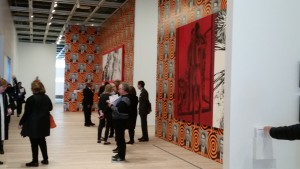
guards willing to pose near sculpture of guards;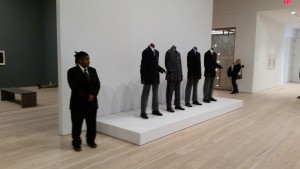
whimsical works amidst the profound,
and elevator interiors that are commissioned artworks by the late Richard Artschwager.
But I was blown away by the architectural and design elements of the structure–making the museum itself a work of art.
Inside, I loved the airy, expansive galleries,
creative placement of work,
from windows, views of the Hudson river, New Jersey and New York city scapes.
Looking down–installations of outdoor galleries by artists such as Mary Hellman.
And, on the the outside–looking up– wonderful shapes, against the sky.
Throughout, there was an air of festivity, with helpful guards who clearly enjoyed their new workspace, and in the first floor cafe, staffers taking part in a celebration of their own.
The Whitney opens to the public on May 1. “America is Hard to See” runs through September 27, 2015.
–Anita M. Harris
Anita M Harris, a writer and communications consultant based in Cambridge, MA, reported on the arts and other topics for national public television. Currently, she is managing director of the Harris Communications Group, an award-winning public relations firm. She is also the author of Broken Patterns, Professional Women and the Quest for a New Feminine Identity, and Ithaca Diaries, (Cambridge Common Press, 2014) .
c. Anita M. Harris 2015
